Key takeaways:
- Community housing development fosters connections and inclusivity, enhancing residents’ sense of belonging.
- Community gardens promote sustainability, health, and social bonds, creating a common ground for relationships to flourish.
- Gathering community support through personal outreach and shared events, like potlucks, builds enthusiasm and collective ownership in projects.
- The garden serves as an educational space for all ages, promoting not only gardening skills but also deeper community engagement and learning.
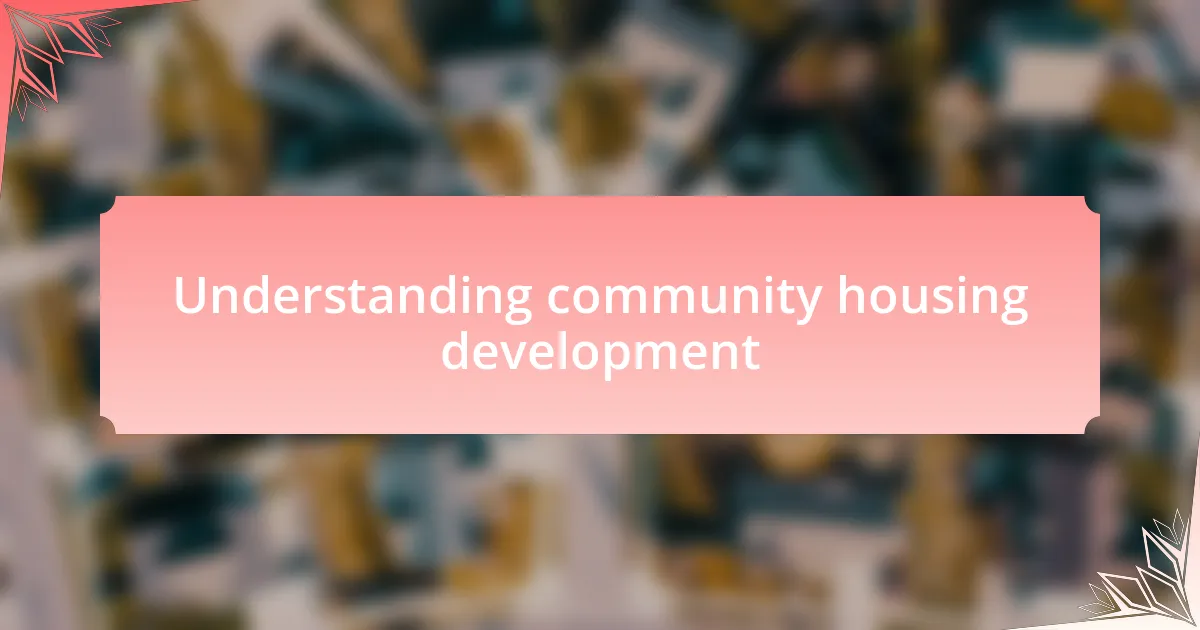
Understanding community housing development
Community housing development is more than just building structures; it’s about creating spaces where people can thrive together. I remember my first experience visiting a community housing project—there was a palpable sense of connection among residents. It made me wonder, what if every neighborhood had that kind of unity?
When we talk about community housing, it’s crucial to consider the needs and voices of the residents. Listening to their stories has profoundly shaped my understanding of what makes a community truly inclusive. Have you ever thought about how each voice can enhance the development process? It’s a reminder that everyone’s input matters.
Finally, the emotional aspect of community housing development cannot be overstated. I recall the joy in a family’s eyes when they received keys to their first home in a community project. That moment encapsulated the power of housing to transform lives. It makes you realize, what is “home” if not a place where we belong and grow together?

Importance of community gardens
Community gardens are essential, as they do more than just beautify a neighborhood; they foster connections between people. I’ll never forget the joy of planting seeds alongside neighbors who quickly became friends. In those moments, it was clear that these gardens serve as a common ground, a place where relationships can blossom just like the plants we nurtured.
Moreover, community gardens can play a crucial role in promoting sustainability. I remember participating in a workshop that taught us about composting and organic gardening. It was empowering to understand how our choices impact the environment, reminding us that a small plot of land can be a powerful agent for ecological change. Have you ever considered how collaborating with others in this space can lead to a more sustainable lifestyle?
Lastly, the health benefits of community gardens are hard to ignore. I found my enthusiasm for fresh produce growing as I tended to the garden with my friends. Gardening encourages physical activity and offers access to nutritious food, creating a ripple effect of well-being in the community. Isn’t it amazing how a simple garden can enhance not only our diet but also our sense of purpose?
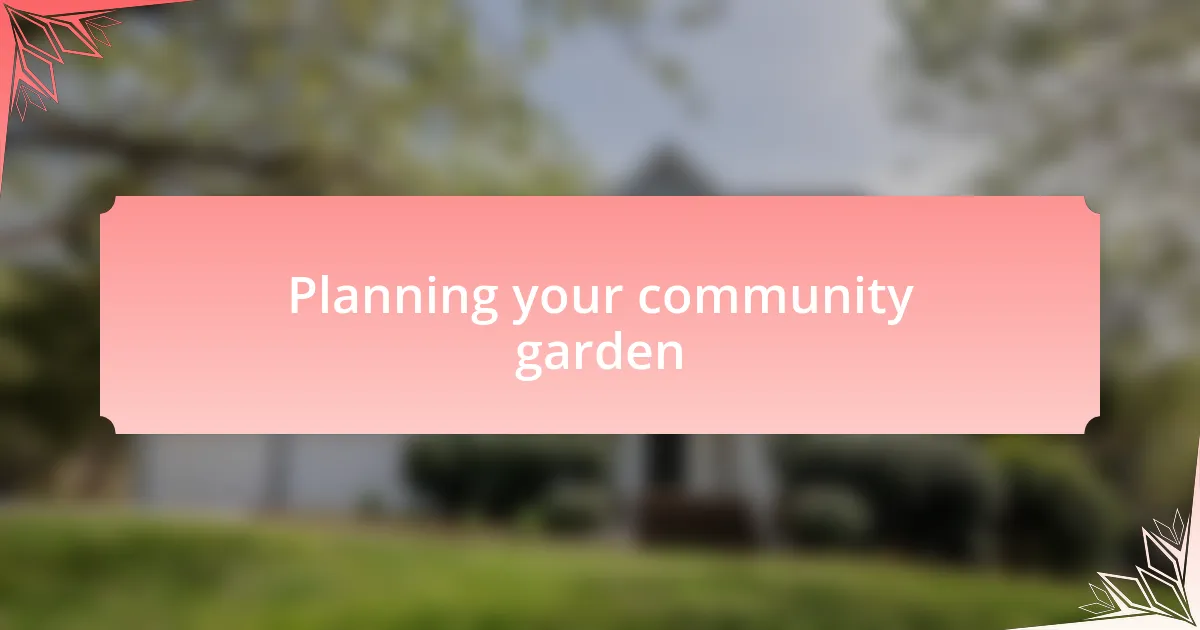
Planning your community garden
When I embarked on planning my community garden, the first step was identifying a suitable location. We surveyed potential sites, considering sunlight exposure and accessibility. I still remember the excitement of walking through a vacant lot, envisioning rows of vibrant plants where there had once been only weeds. Have you thought about how the right spot could transform a space?
Once we settled on a location, we gathered input from our neighbors. It was enlightening to discuss the types of plants everyone wanted to grow—the anticipation of planting tomatoes, herbs, and even flowers created a buzz of enthusiasm. I cherished hearing stories from others about their childhood experiences with gardening, each memory adding a unique touch to our collective vision.
Next, we developed a layout that balanced aesthetics with practicality. I sketched out garden beds, pathways, and communal spaces, ensuring that everyone could contribute while enjoying their time in the garden. As we finalized our plans, I felt a tangible sense of belonging. Isn’t it fascinating how a well-thought-out design can reflect not just our preferences but also our community’s spirit?
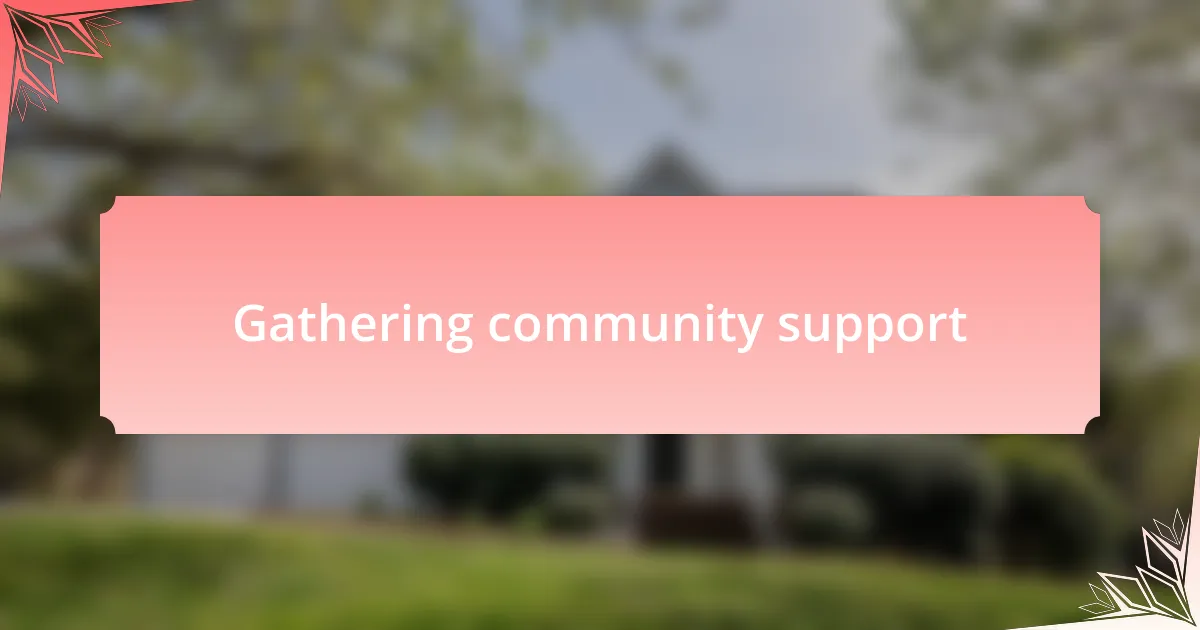
Gathering community support
Once we had a clear vision, the next step was to rally community support. I can still recall the first meeting at the local community center. The room buzzed with excitement as neighbors exchanged ideas and suggestions. It was clear that people were eager to be involved, whether it was through their physical labor or simply by voicing their opinions. Engaging with the community directly helped me realize that their support wasn’t just beneficial; it was essential for the garden’s success.
I learned that reaching out personally made a significant difference. I took the initiative to knock on doors and chat with folks in our neighborhood. Many were surprised to hear about our plans but quickly became enthusiastic supporters. I remember one elderly neighbor, who shared tales of her own gardening experiences, offering to lend her expertise. Her willingness to help not only strengthened our project but also fostered deeper connections among us.
Fundraising became another vital aspect of gathering support. We held potlucks and bake sales, transforming these events into opportunities for the community to come together. The joy of seeing families enjoying themselves while contributing to our cause was truly uplifting. It highlighted the importance of collective effort—after all, what better way to build community than through shared experiences and mutual support?
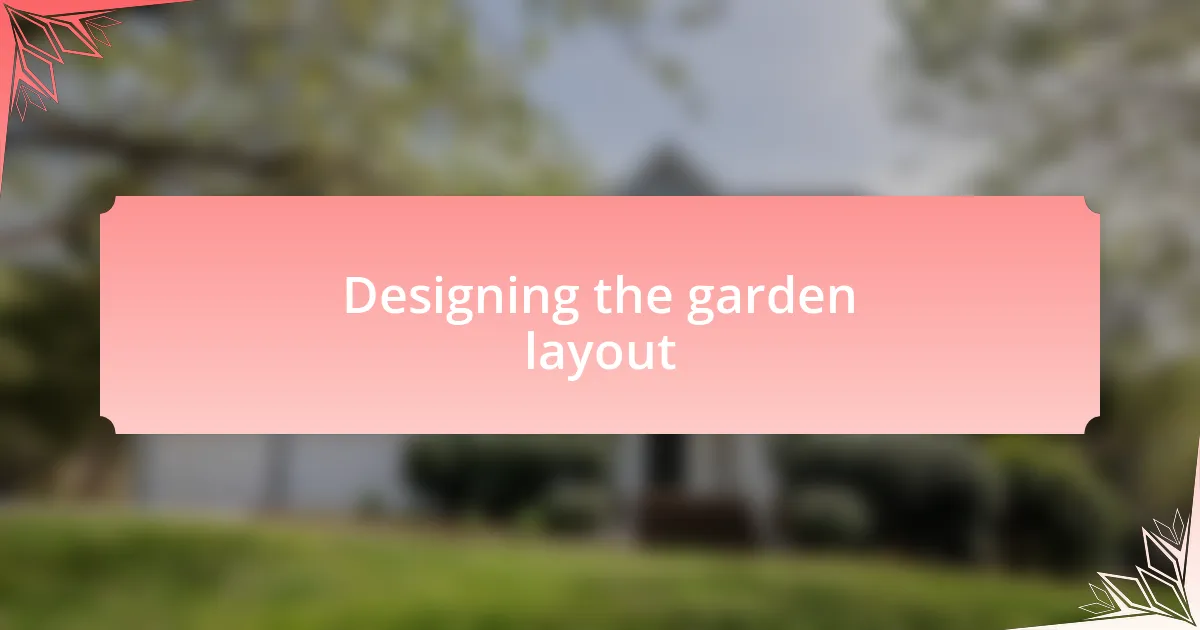
Designing the garden layout
Designing the layout of the community garden was both exciting and daunting. I remember spreading out a large sheet of paper at my dining table, sketching ideas for the space. Decisions like where to place raised beds and pathways felt monumental; after all, the layout would dictate how people interacted with each other and the plants. Would there be room for a seating area? I wanted it to feel inviting.
One of the most rewarding moments was when we gathered a small group of interested neighbors to brainstorm together. We bounced around ideas, sharing our preferences for certain plants and styles. I’ll never forget someone suggesting a butterfly garden—a beautiful way to attract pollinators while also creating a vibrant aesthetic. That moment lit a spark in me; it wasn’t just about growing food; it was about cultivating beauty and community connections.
When envisioning the layout, I aimed for a balance between functionality and accessibility. I made sure that pathways were wide enough for wheelchairs and strollers since inclusivity was important to me. It struck me that this garden could be a place for everyone, where families could visit, learn, and bond. The thought of children frolicking among the plants while parents share gardening tips was a vision worth striving for.
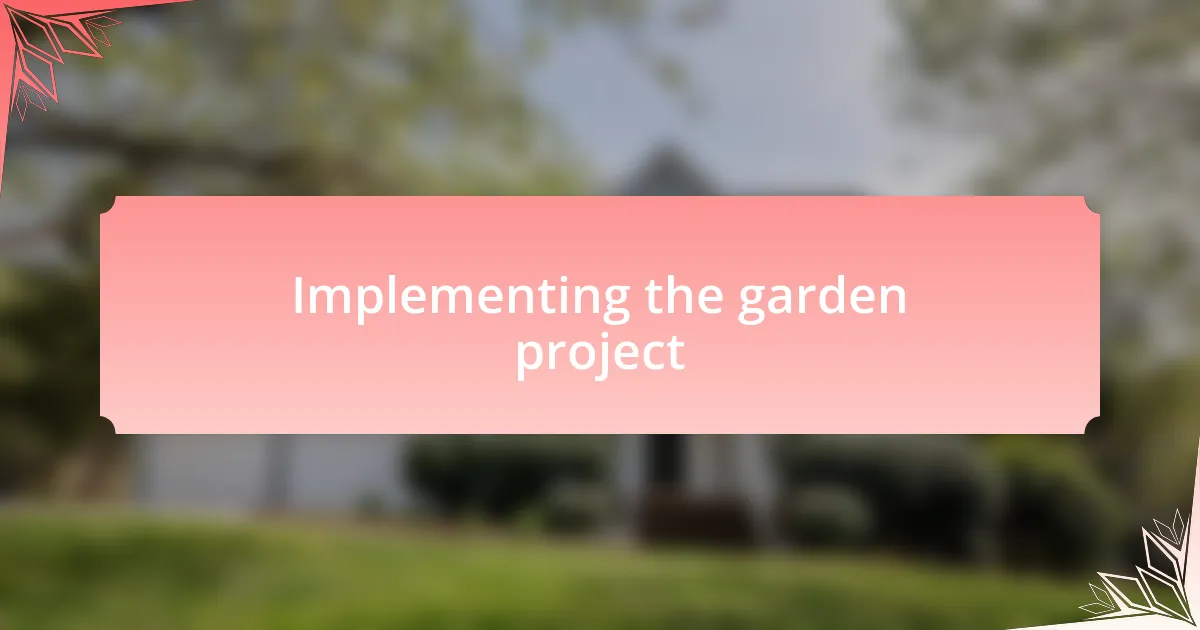
Implementing the garden project
Implementing the garden project required coordinated efforts from everyone involved. I remember organizing our first community meeting, where we discussed the roles and tasks that needed to be tackled. The excitement in the room was palpable as we divided responsibilities—some volunteered for planting, while others took charge of logistics. It felt like a team sport, and seeing neighbors step forward ignited a sense of shared ownership.
As we began the physical work of preparing the site, I faced challenges I hadn’t anticipated. For instance, dealing with rocky soil was a real hurdle. But, inspired by the laughter and camaraderie, I quickly learned the importance of resilience. I can still recall the sight of neighbors wielding shovels, their faces dusted and flushed with effort, yet smiling at the progress we were making together. This hands-on experience turned into an exercise in patience and teamwork, teaching us all that growth often requires hard work.
When it came time to plant, the atmosphere buzzed with energy and enthusiasm. I remember standing beside a neighbor as we planted the first seeds, feeling a shared anticipation about what would blossom from our efforts. It struck me in that moment how vital this garden would be not just for our environment, but for our community ties. Would the fruits of our labor foster deeper connections among us? I found myself believing it could.
Sharing the garden’s benefits
The benefits of our community garden have blossomed far beyond just fresh vegetables. I vividly remember hosting our first harvest potluck, where neighbors brought dishes made from the produce we grew together. Sharing meals in the garden created an atmosphere of warmth and fellowship, solidifying friendships that extend beyond gardening. How often do we find ourselves connecting over the fruits of hard labor and teamwork?
Every time I step into the garden, I am reminded of the lessons it teaches us about patience and sustainability. A couple of weeks ago, I noticed a family carefully tending to their plot, explaining to their children the importance of composting. It’s heartwarming to see that we are fostering not only a green space but also a learning environment for all ages. Isn’t it incredible to think that this garden is cultivating knowledge for the next generation?
Moreover, the garden has sparked community initiatives that we had never envisioned. Just last month, we organized a plant exchange day, where neighbors swapped seedlings and tips. It evolved into a block party, where everyone contributed to a collective effort that made our community stronger. Reflecting on those moments, I can’t help but wonder: What other hidden talents and passions lie within our community, waiting to be uncovered?